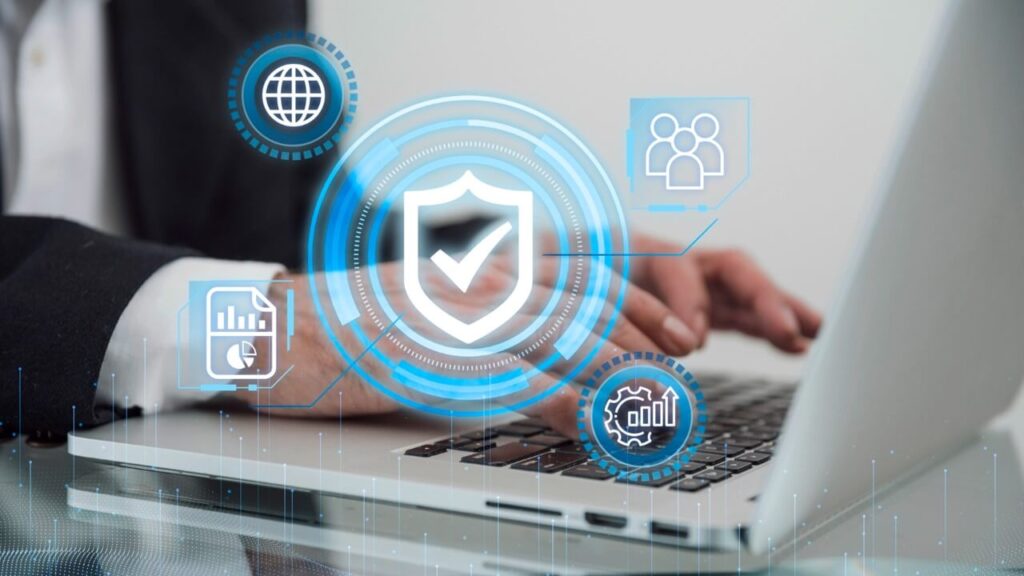
Why ISO Certification Matters in Malaysia
In today’s competitive and globalised business environment, maintaining high standards of quality, safety, and efficiency is more than just a goal — it’s a necessity. ISO certification serves as a globally recognised benchmark that helps organisations demonstrate their commitment to consistent performance and continual improvement.
As Malaysia continues to position itself as a regional hub for trade, manufacturing, and services, ISO certification plays a crucial role in strengthening the credibility of local businesses.
Benefits of ISO Certification
Enhanced Credibility
ISO certification boosts a company's reputation, signaling reliability and commitment to international standards.
Access to Global Markets
Certified companies find it easier to enter international markets, as ISO certification often serves as a prerequisite for global trade and partnerships.
Improved Operational Efficiency
Adopting ISO standards helps streamline processes, reduce waste, and enhance overall productivity and efficiency.
Step 1: Identify the Relevant ISO Standard for Your Business
Choosing the right ISO standard is the foundation of your certification journey. Each ISO standard caters to specific business needs and industry requirements. Here’s a quick overview of common ISO standards and their typical applications:
ISO 9001 – Quality Management Systems
Ideal for: Manufacturing, retail, service providers
Focuses on improving quality, streamlining operations, and enhancing customer satisfaction.
ISO 45001 – Occupational Health & Safety Management Systems
Ideal for: Construction, engineering, heavy industries
Ensures safe work environments and reduces workplace risks.
ISO/IEC 27001 – Information Security Management Systems
Ideal for: Tech companies, IT services, financial institutions
Helps protect sensitive data and reduce cybersecurity risks.
ISO 22000 – Food Safety Management Systems
Ideal for: Food manufacturers, restaurants, supply chain businesses
Addresses food safety risks and ensures hygiene compliance.
ISO 14001 – Environmental Management Systems
Ideal for: Manufacturing, logistics, energy companies
Focuses on reducing environmental impact and improving sustainability.
ISO/IEC 17025 – Testing & Calibration Laboratories
Ideal for: Laboratories, testing facilities, calibration centers
Ensures laboratories are technically competent and able to produce valid, reliable results.
Step 2: The Process to Achieve ISO Certification
Once you’ve selected the relevant ISO standard, the next step is to evaluate how your current processes measure up to its requirements. This includes:
Gap analysis: Evaluate how your current processes, controls, and documentation stack up against ISO requirements.
Identify missing elements: You may uncover areas where written policies are lacking, procedures aren’t well-documented, or risk management is weak.
You can choose to join our Training Programme to equip your internal team with the skills to handle the compliance process, or simply let us manage it for you, guiding you directly to certification with our expert consultancy services.

Step 3: Develop an Implementation Plan
Once you’ve identified the gaps, the next step is to map out how your business will meet the ISO requirements. A well-structured plan helps ensure a smooth transition and keeps everyone on track.
What to include in your plan:
- Set a clear timeline: Define milestones for documentation, training, internal audits, and certification.
- Form a ISO team: Appoint team members from relevant departments to lead and coordinate the process.
- Train your staff: Ensure employees understand the ISO requirements and how it applies to their roles.
- Start preparing your documentation: Draft or update policies, procedures, and control documents as required by your selected ISO standard.
Step 4: Implement the ISO Requirements
With your plan in place, it’s time to implement the necessary processes and controls in your organisation. This is where your business begins to align with the ISO framework in real, practical terms.
Key areas to focus on:
- Apply the new SOPs and policies: Make sure your updated procedures are being followed consistently across all departments.
- Maintain clear and organised documentation: Keep records of training, quality checks, corrective actions, risk assessments, and more.
- Monitor and review: Check regularly to ensure processes are working as intended. Adjust where necessary.
Remember! ISO is not just about having documents in place — it’s about making those standards part of your daily operations.
Step 5: Utilize the PDCA Cycle for Continuous Improvement
PDAC (Plan-Do-Check-Act) is a fundamental principle of ISO standards and is used to continuously improve your processes:
- Plan: Identify areas for improvement and create a plan to address them.
- Do: Implement the plan and make the necessary changes.
- Check: Monitor and review the results to ensure that the changes are effective.
- Act: Take corrective actions if needed and standardize the improvements.
This cycle ensures that your organization keeps improving its processes and is better prepared for the internal audits.

Step 6: Conduct an Internal Audit
Before proceeding to certification, your organization must conduct an internal audit. This essential step ensures your ISO management system is working effectively and complies with the standard’s requirements.
Why Is It Required?
- Helps you find and fix issues early
- Builds confidence in your system
- Is required by the ISO standard before the certification audit
Step 7: Select a Certification Body
Once your internal audit is complete and any issues resolved, the next step is to choose a certification body to conduct your external audit. In Malaysia, certification bodies should be recognized by the National Accreditation Board for Certification Bodies (NABCB). Accreditation ensures the body is competent and credible.
What to Consider When Choosing:
- Accreditation: Confirm they’re NABCB-accredited
- Industry Experience: Choose a body that understands your sector.
- Experience: Look for industry-specific expertise
- Cost: Compare quotes, but don’t compromise on quality
Not sure which certification body is right for you?
Let us help! Our team can guide you in selecting a trusted, accredited body that fits your business needs.
Step 8: Undergo the Certification Audit
The official ISO certification audit is conducted in two main stages:
Stage 1 – Document Review
The auditors review your management system documentation to ensure it aligns with the ISO standard.
Stage 2 – On-Site Audit
The auditors visit your organization to verify that your system is implemented and effective in practice.

Step 9: Receive Certification and Maintain It
Once you successfully complete the certification audit, your organization will be awarded the ISO certification.
What to know:
- Your certification is valid for a defined period, depending on the issuing certification body and standard.
- You will undergo annual surveillance audits to ensure you remain compliant.
- Focus on continuous improvement, regular internal audits, and staff training to stay prepared.
At the end of the certification period, your business must undergo a recertification audit to maintain your ISO status. ISO certification isn’t a one-time effort, it’s a continuous journey toward better business performance.
At SQC, we ensure you’re fully equipped with the expertise, confidence, and credentials needed to excel as a Lead Auditor.
Seek A Professional ISO Consultant
While it’s possible to manage ISO certification on your own, engaging a professional consultant offers significant advantages. An experienced consultant can help identify hidden gaps, streamline your documentation, and ensure your business meets the latest ISO requirements efficiently.
At SQC, we offer comprehensive ISO Consultancy Services and Training Programmes. Whether you want expert guidance throughout or to train your internal team for ongoing compliance, SQC is here to guide you every step of the way.

Need Help with ISO Certification?
Obtaining ISO certification is a significant milestone for any business in Malaysia, offering numerous benefits such as enhanced credibility, improved operational efficiency, and greater customer satisfaction.
The process may seem daunting, but by following the clear steps outlined in this guide, you can confidently navigate your way to certification and ensure long-term success.
Ready to get started? Contact us today for expert consultation or to learn more about our training programmes!

